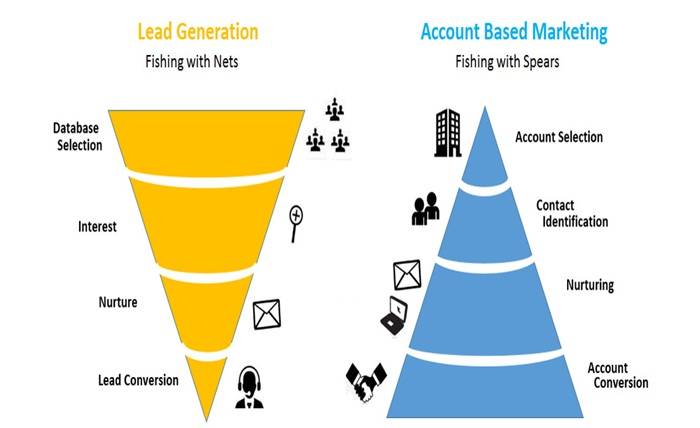In traditional marketing, the funnel reigns supreme—casting a wide net to attract leads, nurturing them, and eventually converting a fraction into customers. But as buyer journeys evolve and markets become more saturated, businesses are questioning whether this model is truly efficient. Enter Account-Based Marketing (ABM), a highly focused strategy that turns the funnel upside down and zeros in on high-value accounts from the start. It’s not just a trend—it’s a shift in how B2B marketing success is achieved.
What Makes ABM Different?
At its core, ABM is about precision. Instead of marketing to a broad audience and hoping that the right people bite, ABM begins by identifying a curated list of target accounts that are the best fit for your offering. From there, marketing and sales work together to create personalized experiences and campaigns tailored specifically for those accounts.
This approach flips the traditional funnel. Rather than starting with mass awareness and filtering down to a few deals, ABM starts with a few high-value targets and builds deep, meaningful engagement to win and grow those accounts. The result? Higher ROI, stronger customer relationships, and faster deal cycles.
Why ABM Works in Today’s Market
Buyers today are more informed and selective. A C-level decision-maker receives countless generic emails every week, many of which never make it past the spam folder. With ABM, personalization is the differentiator. Every piece of content, every email, every ad is designed to speak directly to the prospect’s pain points and goals. That level of relevance doesn’t go unnoticed.
Additionally, ABM aligns marketing and sales teams in a way few other strategies can. Traditional models often lead to misalignment: marketing blames sales for not closing leads, and sales blames marketing for low-quality prospects. ABM eliminates this tension by having both teams focus on the same goal—converting a specific list of accounts. Collaboration becomes not just beneficial, but essential.
The Benefits Go Beyond Acquisition
ABM isn’t just for acquiring new customers; it’s equally powerful for expanding existing accounts. In fact, one of the most strategic aspects of ABM is its ability to deepen relationships and increase customer lifetime value. When you understand an account’s structure, needs, and challenges, you can proactively identify upsell and cross-sell opportunities.
Moreover, retention improves because customers feel seen and understood. Instead of being treated like just another client in a portfolio, they receive tailored solutions and proactive service. This builds trust—and trust translates to long-term loyalty.
Data and Technology: Enablers of ABM
One reason ABM is thriving now is the availability of data and technology that make it scalable. Platforms like LinkedIn, HubSpot, Demandbase, and Salesforce enable teams to identify, segment, and reach target accounts with precision. From IP-targeted ads to dynamic email content, marketers have more tools than ever to create personalized journeys.
Using these platforms, you can track engagement at the account level, not just the individual level. This helps gauge interest across buying committees and enables marketing to deliver timely, relevant follow-ups. It’s not just about one contact—it’s about influencing an entire decision-making team.
Measuring What Matters
Success in ABM isn’t measured by vanity metrics like website traffic or impressions. Instead, it’s about meaningful interactions with key accounts. Are target accounts engaging with your content? Are they moving through the pipeline faster? Are you expanding into new divisions or regions within an existing account?
Metrics such as engagement score, pipeline velocity, deal size, and account penetration are far more indicative of ABM success than click-through rates. It’s a shift in mindset—away from volume and toward value.
Implementing ABM: Start Small and Grow
ABM doesn’t need to start as a massive overhaul. Many companies begin with a pilot program targeting just a few high-potential accounts. This allows teams to test processes, refine personalization tactics, and measure early results before expanding further. Partnering with experienced agencies can also accelerate your ABM journey. Agencies like New North, which specializes in B2B ABM strategy and execution, can help you identify the right accounts, craft personalized campaigns, and ensure your efforts generate meaningful outcomes. For businesses new to ABM, tapping into that expertise can reduce the learning curve significantly.
Conclusion: It’s Time to Think Beyond the Funnel
Account-Based Marketing isn’t about abandoning the funnel—it’s about recognizing that some accounts are worth treating differently. By focusing resources on high-value targets and delivering experiences that resonate deeply, ABM allows businesses to generate better results with less waste.
In a world where attention is scarce and relationships drive revenue, ABM is more than a strategy—it’s a necessity. It’s time to look beyond the funnel and embrace a smarter, more focused way to grow.


